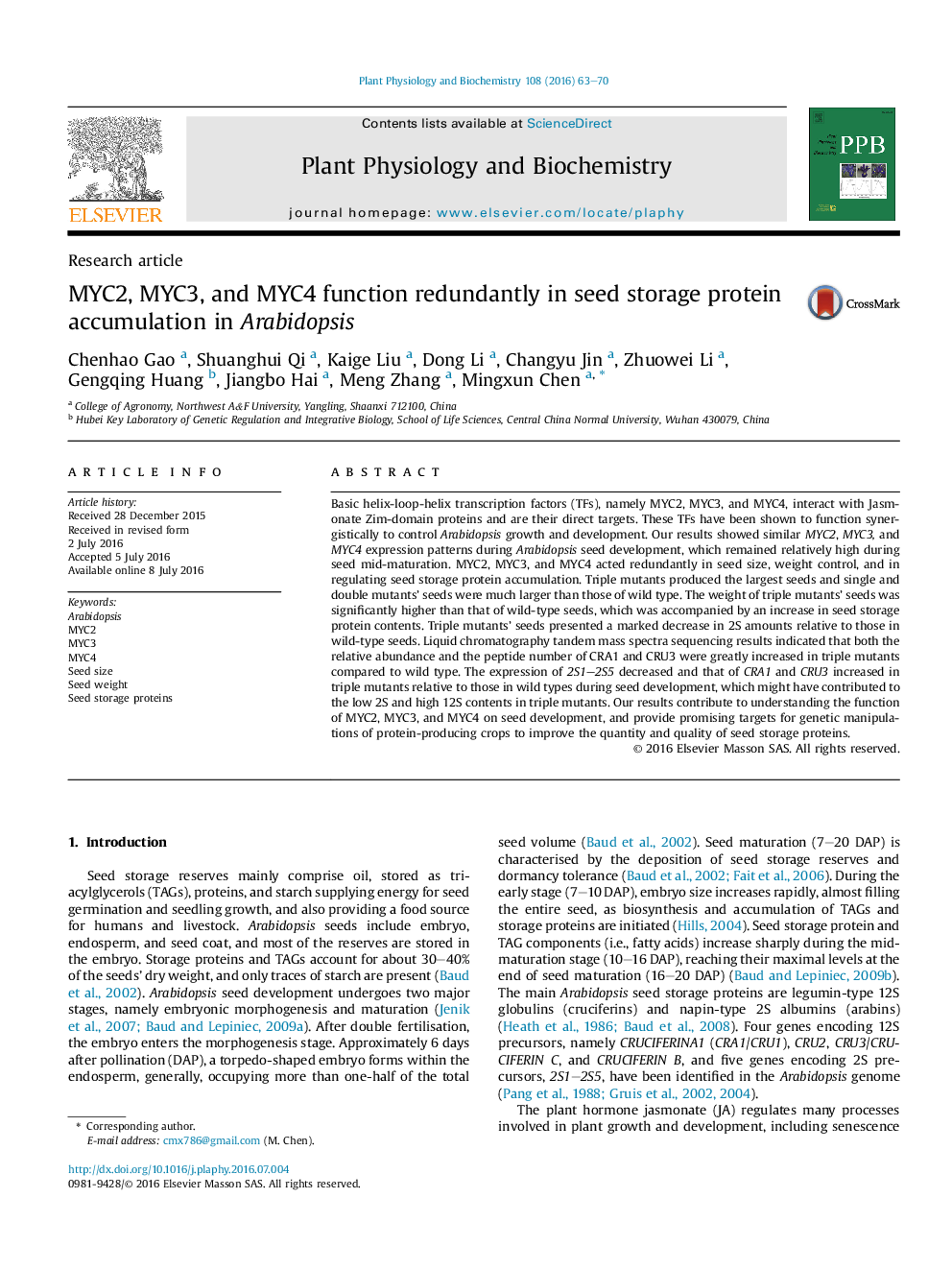| Article ID | Journal | Published Year | Pages | File Type |
|---|---|---|---|---|
| 2014693 | Plant Physiology and Biochemistry | 2016 | 8 Pages |
Abstract
Basic helix-loop-helix transcription factors (TFs), namely MYC2, MYC3, and MYC4, interact with Jasmonate Zim-domain proteins and are their direct targets. These TFs have been shown to function synergistically to control Arabidopsis growth and development. Our results showed similar MYC2, MYC3, and MYC4 expression patterns during Arabidopsis seed development, which remained relatively high during seed mid-maturation. MYC2, MYC3, and MYC4 acted redundantly in seed size, weight control, and in regulating seed storage protein accumulation. Triple mutants produced the largest seeds and single and double mutants' seeds were much larger than those of wild type. The weight of triple mutants' seeds was significantly higher than that of wild-type seeds, which was accompanied by an increase in seed storage protein contents. Triple mutants' seeds presented a marked decrease in 2S amounts relative to those in wild-type seeds. Liquid chromatography tandem mass spectra sequencing results indicated that both the relative abundance and the peptide number of CRA1 and CRU3 were greatly increased in triple mutants compared to wild type. The expression of 2S1-2S5 decreased and that of CRA1 and CRU3 increased in triple mutants relative to those in wild types during seed development, which might have contributed to the low 2S and high 12S contents in triple mutants. Our results contribute to understanding the function of MYC2, MYC3, and MYC4 on seed development, and provide promising targets for genetic manipulations of protein-producing crops to improve the quantity and quality of seed storage proteins.
Related Topics
Life Sciences
Agricultural and Biological Sciences
Plant Science
Authors
Chenhao Gao, Shuanghui Qi, Kaige Liu, Dong Li, Changyu Jin, Zhuowei Li, Gengqing Huang, Jiangbo Hai, Meng Zhang, Mingxun Chen,
